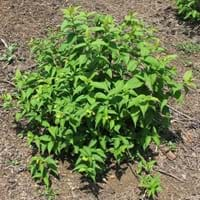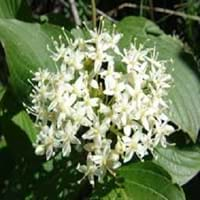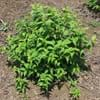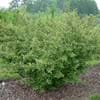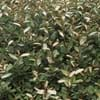Life Span
Annual and Perennial
Perennial
Origin
North America, United States, Northeastern United States, Mid-Atlantic United States, Southeastern United States, North-Central United States, Canada
United States, Northeastern United States, Mid-Atlantic United States, Southeastern United States
Types
Diervilla sessilifolia, Diervilla rivularis
not available
Habitat
Forests, Prairies, Roadsides, Wet lands, Woodlands
Banks, Lake Sides, Shores of rivers or lakes
USDA Hardiness Zone
3-7
5-8
Sunset Zone
A2, A3, 1a, 1b, 2a, 2b, 3a, 3b, 4, 5, 6, 7, 8, 9
3b, 4, 5, 6, 7, 8, 9
Habit
Cushion/Mound-forming
Oval or Rounded
Flower Color
Yellow, Orange, Light Yellow, Yellow green
Ivory
Flower Color Modifier
Not Available
Not Available
Leaf Color in Spring
Light Green, Bronze
Green, Dark Green
Leaf Color in Summer
Dark Green, Bronze
Dark Green
Leaf Color in Fall
Yellow, Red, Bronze
Dark Green, Brown, Dark Red
Leaf Color in Winter
Not Available
Not Available
Leaf Shape
Pinnate
Acuminate
Plant Season
Spring, Summer, Fall, Winter
Summer, Fall
Sunlight
Partial Sun, Partial shade
Full Sun, Partial Sun, Partial shade
Growth Rate
Medium
Medium
Type of Soil
Clay, Loam, Sand
Clay, Loam, Sand
The pH of Soil
Acidic, Neutral, Alkaline
Acidic, Neutral, Alkaline
Soil Drainage
Well drained
Average
Bloom Time
Summer
Early Summer
Tolerances
Drought
Wet Site
Where to Plant?
Ground, Pot
Ground, Pot
How to Plant?
Cuttings
Cuttings, Divison, Stem Cutting
Plant Maintenance
Medium
Medium
Watering Requirements
Average Water Needs, Medium
Average Water Needs
In Summer
Lots of watering
Lots of watering
In Spring
Moderate
Moderate
In Winter
Average Water
Average Water
Soil pH
Acidic, Neutral, Alkaline
Acidic, Neutral, Alkaline
Soil Type
Clay, Loam, Sand
Clay, Loam, Sand
Soil Drainage Capacity
Well drained
Average
Sun Exposure
Partial Sun, Partial shade
Full Sun, Partial Sun, Partial shade
Pruning
Prune in early spring, Remove damaged leaves, Remove dead branches, Remove dead leaves, Remove dead or diseased plant parts, Remove shoots
Remove damaged leaves, Remove dead branches, Remove dead leaves
Fertilizers
10-10-10
All-Purpose Liquid Fertilizer
Pests and Diseases
Red blotch
Red blotch
Plant Tolerance
Drought
Drought
Flower Petal Number
Single
Single
Foliage Texture
Medium
Medium
Foliage Sheen
Matte
Matte
Attracts
Birds, Butterflies, Hummingbirds, Not Available
Birds
Allergy
Avoid during Pregnancy, Poisonous, Toxic
Unknown
Aesthetic Uses
Showy Purposes
Ground Cover, Wild gardens, Woodland margins
Beauty Benefits
Good for skin
Not Available
Edible Uses
Insignificant
No
Environmental Uses
Air purification, soil stabilisation
Air purification
Medicinal Uses
Diuretic, Galactogogue, Laxative, Opthalmic
Not Available
Part of Plant Used
Bark, Leaves
Not Available
Other Uses
Used for its medicinal properties
Acts as a natural source of rain water for birds and insects.
Used As Indoor Plant
Yes
No
Used As Outdoor Plant
Yes
Yes
Garden Design
Container, Foundation, Groundcover, Mixed Border, Rock Garden, Wall
Foundation, Hedges, Mixed Border, Screening, Wind Break
Botanical Name
DIERVILLA lonicera
CORNUS amomum
Common Name
Northern bush honeysuckle, Low bush honeysuckle, Dwarf bush honeysuckle, Yellow-flowered upright honeysuckle
red willow
In Hindi
Bush Honeysuckle
Plant
silky dogwood
In German
Bush Honeysuckle
Pflanze
silky dogwood
In French
Bush Honeysuckle
Plante
silky dogwood
In Spanish
Bush madreselva
Planta
silky dogwood
In Greek
Μπους Αγιόκλημα
Φυτό
silky dogwood
In Portuguese
Bush, Honeysuckle
Plantar
silky dogwood
In Polish
Bush Honeysuckle
Roślina
silky dogwood
In Latin
CISSANTHEMOS Bush
planta
silky dogwood
Phylum
Magnoliophyta
Magnoliophyta
Class
Magnoliopsida
Magnoliopsida
Order
Dipsacales
Cornales
Family
Caprifoliaceae
Cornaceae
Clade
Angiosperms, Asterids, Eudicots
Angiosperms, Asterids, Eudicots
Tribe
Diervilleae
Not Available
Subfamily
Not Available
Not Available
Number of Species
Not Available
Not Available
Importance of Bush Honeysuckle and Silky Dogwood
Want to have the most appropriate plant for your garden? You might want to know the importance of Bush Honeysuckle and Silky Dogwood. Basically, these two plants vary in many aspects. Compare Bush Honeysuckle and Silky Dogwood as they differ in many characteristics such as their life, care, benefits, facts, etc. Every gardener must at least have the slightest clue about the plants he wants to plant in his garden. Compare their benefits, which differ in many ways like facts and uses. The medicinal use of Bush Honeysuckle is Diuretic, Galactogogue, Laxative and Opthalmic whereas of Silky Dogwood is Not Available. Bush Honeysuckle has beauty benefits as follows: Good for skin while Silky Dogwood has beauty benefits as follows: Good for skin.
Compare Facts of Bush Honeysuckle vs Silky Dogwood
How to choose the best garden plant for your garden depending upon its facts? Here garden plant comparison will help you to solve this query. Compare the facts of Bush Honeysuckle vs Silky Dogwood and know which one to choose. As garden plants have benefits and other uses, allergy is also a major drawback of plants for some people. Allergic reactions of Bush Honeysuckle are Avoid during Pregnancy, Poisonous and Toxic whereas of Silky Dogwood have Unknown respectively. Having a fruit bearing plant in your garden can be a plus point of your garden. Bush Honeysuckle has no showy fruits and Silky Dogwood has showy fruits. Also Bush Honeysuckle is flowering and Silky Dogwood is not flowering . You can compare Bush Honeysuckle and Silky Dogwood facts and facts of other plants too.
